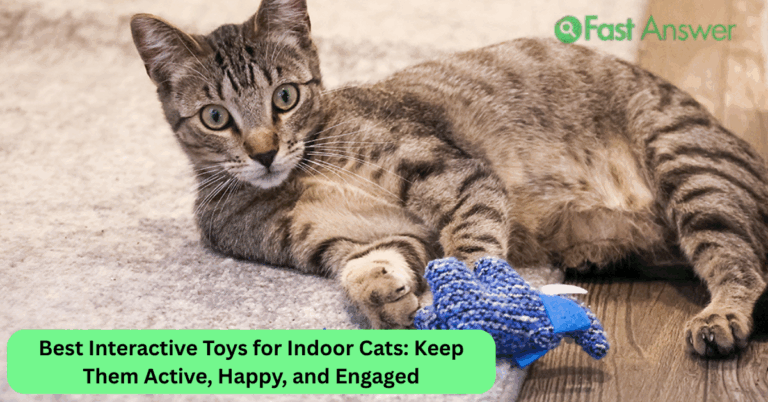How to Make DIY Pet Enrichment Activities: Keep Your Companion Mentally Engaged
Bored pets are often restless, anxious, or even destructive but mental stimulation can change that completely. Enrichment is essential for your pet’s overall well-being, and you don’t need expensive toys or professional trainers to make it happen. Learning how to make DIY pet enrichment activities allows you to keep your dog, cat, or small animal engaged using simple, household materials and a bit of creativity. Whether you’re stuck indoors, on a budget, or just love hands-on interaction with your pet, these easy ideas offer fun, challenge, and bonding opportunities every day.
Turn Mealtime Into a Mental Game
Feeding time is one of the easiest ways to introduce enrichment without changing your routine. Instead of serving food in a regular bowl, try creating a DIY puzzle feeder. Use muffin tins with tennis balls over the kibble, hide treats in a towel roll, or stuff a paper towel tube with snacks and fold the ends shut. These games slow down eating while encouraging problem-solving great for both dogs and cats.
For pets that eat wet food, freezing it inside a silicone mold or spreading it inside a lick mat creates a satisfying, time-consuming activity that doubles as stress relief. Always supervise new activities at first and adjust the difficulty as your pet gets better at solving the puzzles.
Create Sensory Exploration Zones at Home
Pets explore the world through their senses. Setting up sensory stations around your home helps them engage naturally. For dogs, scatter treats in a box filled with safe items like shredded paper, old towels, or tennis balls. For cats, you can add cardboard boxes, crinkly paper, and different textured mats for climbing and scratching.
Scent work is another favorite, especially for dogs. Hide a treat in a few cardboard cups and shuffle them around for your dog to sniff out the prize. For cats, sprinkle a little catnip inside toys or boxes and watch them explore. These activities engage their natural instincts and reduce boredom-related behaviors.
Repurpose Household Items into Interactive Toys
Look around your home most enrichment tools are already within reach. Empty egg cartons can become food puzzle trays. Paper bags make excellent foraging zones. A knotted old T-shirt becomes a fun tug toy. Even water bottles (with the cap and ring removed) filled with a few kibble pieces can become a fun, noisy shaker for pets to roll and chase.
Cats enjoy string mazes, dangling feather toys, or crinkled aluminum foil balls. Rabbits and guinea pigs love tunnels made from cardboard tubes. Always supervise use to ensure no small parts are swallowed, and rotate toys frequently to keep them interesting.
Engage Their Brain With Training and Trick Sessions
Training isn’t just for dogs and it’s not just for obedience. Teaching your pet new tricks or commands taps into mental energy and builds your relationship. Use small treats and short, consistent sessions to teach sit, stay, spin, or target touch. For cats, rabbits, and even birds, clicker training works wonders.
You can also use training time to create “challenges” asking your pet to perform a series of tasks before getting a reward. This type of cognitive enrichment boosts confidence and helps prevent boredom-based misbehavior. Keep sessions positive and fun, and adapt to your pet’s interest level.
Rotate, Refresh, and Reinvent Regularly
The secret to effective enrichment is novelty. Pets lose interest when exposed to the same activities over and over. That’s why rotating toys, changing up environments, and refreshing games with new scents or sounds can reignite curiosity. Even hiding the same toy in a new location or using a different type of reward can make an old game feel brand new.
Keep a “toy bank” and switch out available options every few days. Observe what your pet responds to most and modify based on their preferences. Enrichment is personal, and customizing your approach builds a happier, healthier companion.
FAQ
1. What is enrichment for pets?
It refers to activities that stimulate your pet’s brain and senses—keeping them mentally and physically active.
2. Are DIY pet enrichment activities safe?
Yes, as long as you use pet-safe materials and supervise at first. Avoid small parts that can be swallowed.
3. How often should I give my pet enrichment activities?
Daily enrichment is ideal, even if it’s just 10–15 minutes. Consistency helps prevent boredom and behavioral issues.
4. Do enrichment activities replace walks or exercise?
No. They complement physical exercise by providing mental stimulation, especially important on indoor days.
5. Can I make enrichment fun for senior pets?
Absolutely. Just lower the difficulty and choose gentle activities like sniffing games or slow puzzle feeders.



